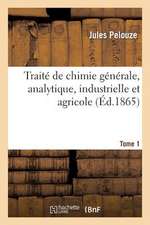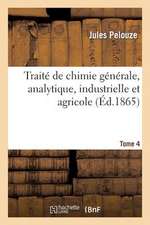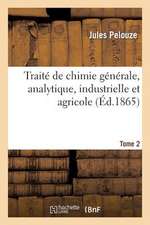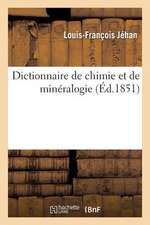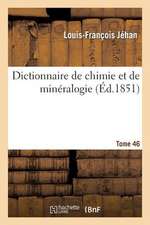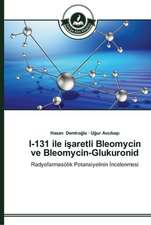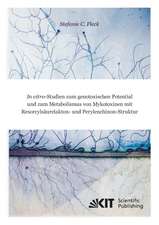Reverse Osmosis 3rd Edition
Autor Kuceraen Limba Engleză Hardback – 29 mai 2023
Preț: 1227.01 lei
Preț vechi: 1593.52 lei
-23% Nou
Puncte Express: 1841
Preț estimativ în valută:
234.82€ • 243.08$ • 198.47£
234.82€ • 243.08$ • 198.47£
Carte disponibilă
Livrare economică 13-27 februarie
Preluare comenzi: 021 569.72.76
Specificații
ISBN-13: 9781119724742
ISBN-10: 1119724740
Pagini: 672
Dimensiuni: 152 x 229 x 39 mm
Greutate: 1.07 kg
Ediția:3rd Edition
Editura: Wiley
Locul publicării:Hoboken, United States
ISBN-10: 1119724740
Pagini: 672
Dimensiuni: 152 x 229 x 39 mm
Greutate: 1.07 kg
Ediția:3rd Edition
Editura: Wiley
Locul publicării:Hoboken, United States
Cuprins
Preface to the 3rd Edition xxi
Acknowledgements xxiii
Section I: Fundamentals 1
1 Introduction to Reverse Osmosis: History, Challenges, and Future Directions 3
1.1 Introduction 3
1.2 A Brief History of Reverse Osmosis 5
1.2.1 Early Development 5
1.2.2 Advances 1970s-1980s 10
1.2.3 Advances from 1990s through the Early 2000s 12
1.3 Challenges and Prospects 14
1.3.1 Membrane Materials Development 15
1.3.2 Modification of Element Construction for Ultra-High Pressure or High-Temperature Operation 17
1.3.2.1 Ultra-High Pressure Spiral Wound RO 17
1.3.2.2 High-Temperature Elements 18
1.3.3 Optimization of RO Element Feed Channel Spacer 19
1.3.4 Other Advances and Future Requirements 23
1.4 Summary 26
Symbols 26
Nomenclature 27
References 27
2 Principles and Terminology 33
2.1 Semipermeable Membranes 33
2.2 Osmosis 33
2.3 Reverse Osmosis 35
2.4 Basic Performance Parameters: Recovery, Rejection, and Flux 35
2.4.1 Recovery and Concentration Factor 35
2.4.2 Rejection 38
2.4.3 Flux 41
2.4.3.1 Water Flux 41
2.4.3.2 Solute Flux 43
2.5 Filtration 43
2.5.1 Dead-End Filtration 43
2.5.2 Cross-Flow Filtration 43
2.6 Concentration Polarization 45
Symbols 47
Nomenclature 48
References 48
3 Membranes: Transport Models, Characterization, and Elements 51
3.1 Membrane Transport Models 51
3.1.1 Solution-Diffusion Transport Model 52
3.1.2 Modified Solution-Diffusion Transport Models 55
3.1.2.1 Solution-Diffusion Imperfection Model 55
3.1.2.2 Extended Solution-Diffusion Model 56
3.1.3 Pore-Based Transport Models 56
3.1.4 Models Based on Non-Equilibrium Thermodynamics 57
3.2 Polymeric Membranes 57
3.2.1 Cellulose Acetate 57
3.2.2 Linear Polyamide (Aramids) 61
3.2.3 Fully Aromatic Polyamide Composite Membranes 63
3.2.3.1 NS-100 Membrane 64
3.2.3.2 FT-30 Composite Membrane 67
3.2.4 Characterization of CA and Composite Polyamide Membranes 73
3.2.4.1 Surface Roughness 73
3.2.4.2 Zeta Potential (Surface Charge) 76
3.2.4.3 Hydrophilicity 76
3.2.5 Other Membrane Polymers 78
3.3 Membrane Elements 80
3.3.1 Plate and Frame Elements 81
3.3.2 Tubular Elements 82
3.3.3 Hollow Fine Fiber Elements 83
3.3.4 Spiral Wound Elements 84
3.4 Specialty Membranes and Elements 91
3.4.1 Specialty Membranes 91
3.4.1.1 Dry Membranes 91
3.4.1.2 Boron-Rejecting Membranes 92
3.4.2 Specialty Elements 93
3.4.2.1 Sanitary Elements 93
3.4.2.2 Disc Tube Elements 94
3.4.2.3 Vibratory Shear Enhanced Processing (VSEP) Elements and System 94
3.4.2.4 Ultra-High Pressure and High Temperature Elements 95
Symbols 95
Nomenclature 96
References 97
Section II: System Design and Engineering 103
4 Basic Design Arrangements and Concentration Polarization Guidelines 105
4.1 Arrays and Stages 105
4.1.1 Recovery per System Array 106
4.1.2 Element-By-Element Flow and Quality Distribution 108
4.1.3 Flux Guidelines 109
4.1.4 Cross-Flow Velocity Guidelines for Array Design 111
4.1.5 Concentrate Recycle 112
4.2 Passes 113
Symbols 115
Nomenclature 115
References 115
5 RO System Design Using Design Software 117
5.1 RO System Design Guidelines 117
5.2 Step-by-Step Design--Sample Problem 118
5.2.1 Step 1--Water Flux 119
5.2.2 Step 2--Membrane Selection 119
5.2.3 Step 3--Number of Elements Required 119
5.2.4 Step 4--System Array 120
5.3 Design Software 121
5.3.1 Water Application Value Engine (WAVE)-- DuPont Water Solutions 123
5.3.2 IMSDesign--Hydranautics 131
5.3.3 Q+ Projection Software LGChem 135
5.4 Optimum Design Result for the Sample Problem 140
Symbols 141
Nomenclature 141
References 142
6 Design Considerations 143
6.1 Feed Water Source and Quality 143
6.1.1 Feed Water Source 143
6.1.2 Feed Water Quality and Guidelines 145
6.1.3 pH 147
6.1.3.1 pH Profile Through an RO System-- Alkalinity Relationships 148
6.1.3.2 pH and Membrane Scaling Potential 148
6.1.3.3 pH Effects on Solute Rejection and Water Permeability 149
6.2 System Operations 149
6.2.1 Pressure 149
6.2.2 Compaction 151
6.2.3 Temperature 155
6.2.4 Balancing Flows 156
6.2.5 Designing for Variable Flow Demand 157
6.3 Existing RO System Design Considerations 157
6.3.1 Changing Membranes 157
6.3.1.1 Changing Membrane Area 158
6.3.1.2 Changing Membrane Types 158
6.3.1.3 Mixing Membrane Types 158
6.3.2 Increasing Recovery 159
6.3.3 Changing Feed Water Sources 160
6.3.4 Reducing Permeate Flow 161
Symbols 161
Nomenclature 161
References 162
7 RO Equipment 163
7.1 Basic RO Skid Components 163
7.1.1 Cartridge Filters 164
7.1.2 High Pressure Feed Pump 172
7.1.3 Pressure Vessels 177
7.2 Skid Design Considerations 181
7.2.1 Piping Materials of Construction 181
7.2.2 Feed Distribution Headers 183
7.2.3 Stage-by-Stage Cleaning 184
7.2.4 Sampling and Profiling/Probing Connections 187
7.2.5 Instrumentation 188
7.2.6 Controls and Data Acquisition/Analysis 193
7.2.6.1 System Control 193
7.2.6.2 Data Acquisition and Analysis 194
7.2.7 Designs for Variable Permeate Flow Demand 195
7.3 Energy Recovery Devices (ERDs) 196
7.3.1 ERD Types 196
7.3.2 ERD Applications for RO 197
7.3.2.1 Single-Stage RO 197
7.3.2.2 Multi-Stage RO 197
7.4 Clean-In-Place (CIP) Equipment 200
7.5 Mobile RO Equipment 203
Symbols 205
Nomenclature 205
References 206
Section III: Membrane Deposition and Degradation: Causes, Effects, and Mitigation via Pretreatment and Operations 207
8 Membrane Scaling 211
8.1 What is Membrane Scale? 211
8.2 Effects of Scale on Membrane Performance 212
8.3 Hardness Scales 215
8.3.1 Types of Hardness Scale 215
8.3.1.1 Carbonate-Based Hardness Scales 215
8.3.1.2 Sulfate-Based Hardness Scales 216
8.3.1.3 Other Calcium Scales: Calcium Phosphate and Calcium Fluoride 218
8.3.2 Mitigation of Hardness Scales 219
8.3.2.1 Chemical Pretreatment--Acid and Antiscalant Dosing 220
8.3.2.2 Non-Chemical Pretreatment--Sodium Softening and Nanofiltration 221
8.3.2.3 Operational Techniques--Flushing, Reverse Flow, and Closed Circuit Desalination 225
8.4 Silica Scale 226
8.4.1 Forms and Reactions of Silica 227
8.4.2 Factors Affecting Silica Scale Formation 228
8.4.3 Mitigation of Silica Scale 232
8.5 Struvite 236
8.5.1 What is Struvite? 236
8.5.2 Mitigation of Struvite 238
8.6 Scaling Mitigation Guidelines--Summary 239
Symbols 240
Nomenclature 240
References 240
9 Generalized Membrane Fouling 249
9.1 What is Membrane Fouling? 249
9.2 Classification and Measurement of Potential Foulants 250
9.2.1 Settleable and Supra-Colloidal Particulates 251
9.2.2 Colloids 252
9.2.2.1 Measurement of Colloids for RO Applications--Silt Density Index (SDI15) 252
9.2.2.2 Measure of Colloids--Modified Fouling Indices 255
9.2.2.3 Summary of Colloidal Fouling Indices 257
9.2.3 Natural Organic Material (NOM) 257
9.2.4 Other Organics 259
9.2.5 Other Foulants: Cationic Coagulants and Surfactants, and Silicone-Based Antifoams 259
9.2.6 Metals: Aluminum, Iron, Manganese, and Sulfur 259
9.2.6.1 Aluminum 259
9.2.6.2 Iron and Manganese 261
9.2.6.3 Hydrogen Sulfide 262
9.3 Effects of Fouling on Membrane Performance 265
9.3.1 Effects of Inorganic Foulants 266
9.3.1.1 Fouling with Larger Settleable and Supra-Colloidal Solids 266
9.3.1.2 Cake Layer Surface Fouling with Colloids 266
9.3.1.3 Feed Channel Fouling 268
9.3.1.4 Summary of Fouling Effects of Inorganic Particulates and Colloids 271
9.3.2 Effects of NOM and Other Organics 273
9.3.2.1 Effects of NOM--Humic Acids 273
9.3.2.2 Effects of Hydrocarbons 276
9.3.2.3 Effects of Cationic Coagulants and Surfactants 278
9.3.2.4 Summary of the Effects of Organic Surfactant and Antifoam Fouling on Membrane Performance 279
9.4 Pretreatment to Minimize Membrane Fouling 279
9.4.1 Primary Pretreatment--Clarification for Colloids and Organics (NOM) Removal 280
9.4.1.1 Coagulation 280
9.4.1.2 Flocculation 283
9.4.2 Pressure Filtration: Particles, SDI15 , and Organics Removal 283
9.4.2.1 Multimedia Pressure Filters: Suspended Solids Removal 283
9.4.2.2 Catalytic Filters: Soluble Iron, Manganese, and Hydrogen Sulfide Removal 287
9.4.2.3 Carbon Filters: TOC Removal 292
9.4.2.4 Walnut Shell Filters: Hydrocarbon Oil Removal 296
9.4.2.5 Cartridge Filters: What is Their Purpose? 299
9.4.3 Membrane Filtration Turbidity, SDI 15 , and Metal Hydroxide Removal 300
9.4.3.1 Membrane Materials and Elements 301
9.4.3.2 Membrane Filtration Operations-- Polymeric Membranes 306
9.4.3.3 Membrane Filtration as Pretreatment for RO 311
9.4.4 Nanofiltration (NF): Organics and Color Removal 321
9.5 Feed Water Quality Guidelines to Minimize Membrane Fouling 323
Symbols 324
Nomenclature 324
References 326
10 RO Membrane Biofouling 335
10.1 What is RO Membrane Biofouling? 335
10.2 Factors Affecting Membrane Biofouling 339
10.2.1 Polyamide RO Membrane Characteristics 339
10.2.1.1 Membrane Surface Roughness 339
10.2.1.2 Surface Charge and Zeta Potential 339
10.2.1.3 Membrane Hydrophilicity 339
10.2.2 Feed Water Matrix 340
10.2.2.1 Concentration of Microorganisms and Nutrients 340
10.2.2.2 Feed Water Ionic Strength and pH 341
10.2.2.3 Pretreatment Antiscalants 341
10.2.2.4 Feed Water Organic Concentration and Fouling 341
10.2.3 RO System Hydrodynamics 341
10.3 Effects of Biofouling on Membrane Performance 342
10.3.1 Scale Formation 342
10.3.2 Hydrodynamic Effects on Performance 342
10.4 Measurement of Biofouling 343
10.4.1 Predictive Techniques 343
10.4.1.1 Assimilable Organic Carbon (AOC) 343
10.4.1.2 Adenosine Triphosphate (ATP) and the Biofilm Formation Rate (BFR) 344
10.4.2 Plate Counts 344
10.4.2.1 Heterotrophic Plate Counts (HPC) 344
10.4.2.2 Total Direct Counts (TDC) 345
10.5 Mitigation Techniques 345
10.5.1 Pretreatment 346
10.5.1.1 Reduction of Feed Water Nutrients and Microorganisms 346
10.5.2 Disinfection 348
10.5.2.1 Physiochemical Disinfection Method-- Ultraviolet (UV) Light 348
10.5.2.2 Chemical Disinfection--Oxidizing Biocides 353
10.5.2.3 Chemical Disinfection--Non-Oxidizing Biocide 368
10.5.2.4 Biocides Not Recommended for Use with Polyamide RO Membranes 370
10.5.2.5 Chemical Disinfection--Prospective Biocides for RO 370
10.5.3 Membrane Cleaning for Biofouling Removal 373
10.5.4 Membrane "Sterilization" 375
10.5.5 Biocide Flushing 375
10.6 Biofouling and Mitigation Summary 376
Symbols 378
Nomenclature 378
References 379
11 Membrane Degradation 387
11.1 Chemical Degradation 388
11.1.1 Polyamide Layer Degradation--Oxidation 388
11.1.1.1 Chlorine 388
11.1.1.2 Chloramine 396
11.1.1.3 Chlorine Dioxide 398
11.1.2 Polysulfone Support Layer Degradation 400
11.1.3 Polyester Fabric Degradation--Hydrolysis 402
11.1.4 Prevention of Chemical Damage 402
11.1.4.1 Removal of Oxidizers 402
11.1.4.2 Protection of Membrane Support Layers 404
11.2 Mechanical Damage 404
11.2.1 Physical Membrane Damage Due to Abrasion 404
11.2.2 Physical Membrane Damage Resulting from Operational Factors 407
Symbols 412
Nomenclature 412
References 412
Section IV: System Monitoring, Normalization, and Troubleshooting 417
12 Data Collection and Normalization 419
12.1 Data Collection 419
12.2 Data Normalization 422
Symbols 427
Subscripts 428
Nomenclature 428
References 428
13 Membrane Issues and Troubleshooting 431
13.1 Observed Performance Issues 432
13.1.1 High Permeate Solute Concentration 432
13.1.1.1 Increase in Feed Water Concentration of Ions 433
13.1.1.2 Hardness Scaling 433
13.1.1.3 Membrane Damage 434
13.1.1.4 Temperature Increase/Pressure Decrease 435
13.1.1.5 System Operations and Mechanical Issues 438
13.1.2 Changes in Permeate Flow 439
13.1.3 Changes in Feed Pressure 439
13.1.4 High Differential Pressure 440
13.2 Common Causes of Performance Failures 445
13.2.1 Mechanical Failures 445
13.2.2 RO Equipment Design 445
13.2.3 Operational Problems 446
13.2.4 Feed Water Quality Issues 446
13.2.5 Membrane Issues 446
13.3 Troubleshooting Techniques 447
13.3.1 Mechanical Inspection 447
13.3.2 Cartridge Filter Inspection 447
13.3.3 Water Analyses 448
13.3.4 RO Projections 449
13.3.5 Profiling and Probing 449
13.3.5.1 Profiling 449
13.3.5.2 Probing 452
13.3.6 Normalized Data Analysis 455
13.3.7 Autopsy 457
13.3.7.1 Visual Inspection--External 458
13.3.7.2 Visual Inspection--Internal 459
Symbols 471
Nomenclature 471
References 472
Section V: Off-Line Activities: Membrane Cleaning, Flushing, and Layup 475
14 Membrane Cleaning 477
14.1 When to Clean 478
14.2 Cleaning Chemicals 479
14.2.1 High pH Cleaning 480
14.2.2 Low pH Cleaning 481
14.3 Cleaning Equipment Design 483
14.3.1 Design of the RO Skid for Effective Cleaning 483
14.3.2 Design of the Cleaning Skid 484
14.3.2.1 Cleaning Tank 484
14.3.2.2 Cartridge Filters 486
14.3.2.3 Cleaning Pump 486
14.4 Cleaning Techniques 487
14.4.1 Conventional Cleaning 487
14.4.2 Two-Phase Cleaning 489
14.4.3 Reverse Cleaning 490
14.4.4 Preventative Cleaning 490
14.4.4.1 Extrapolative Preventative Cleaning 491
14.4.4.2 Direct-Osmosis High-Salinity (DO-HS) On-Line Cleaning Technique 491
14.5 Determining the Efficacy of Cleaning 493
14.6 Clean-In-Place (CIP) Versus Offsite Cleaning 494
14.6.1 CIP 494
14.6.2 Off-Site Cleaning 494
14.7 Membrane Disinfection 495
14.7.1 Hydrogen Peroxide/Peroxyacetic Acid 495
14.7.2 Non-Oxidizing Biocides 497
14.7.2.1 DBNPA 497
14.7.2.2 Isothiazolones--CMIT/MIT 499
14.7.2.3 Other Non-Oxidizing Biocides 500
Symbols 500
Nomenclature 500
References 501
15 Controlling Off-Line Membrane Deposition via Flushing and Layup 505
15.1 Membrane Flushing 505
15.1.1 End of Service Flush 506
15.1.2 Stand-By Flush 506
15.1.3 Return to Service Flush 507
15.2 Membrane Layup 508
15.2.1 Short-Term Layup 508
15.2.2 Long-Term Layup 508
15.2.2.1 Sodium Metabisulfite (SMBS) 508
15.2.2.2 DBNPA 510
15.2.2.3 CMIT/MIT 510
15.3 Membrane Preservation 510
Nomenclature 512
References 512
Section VI: Sustainability and Future Prospects 515
16 Concentrate Management 517
16.1 Discharge 517
16.1.1 Discharge to Surface Waters 517
16.1.2 Discharge to Sewer 518
16.1.3 Discharge to On-Site Treatment Facility 518
16.1.4 Deep Well Injection 518
16.2 Land Application 519
16.2.1 Irrigation 519
16.2.2 Evaporation Ponds 519
16.3 Reuse 519
16.3.1 Direct Reuse 520
16.3.1.1 Wash Down Systems 520
16.3.1.2 Cooling Tower Make-Up 520
16.3.2 Treated Concentrate for Reuse--Brine Minimization 520
16.3.2.1 Recovery RO Systems 520
16.3.2.2 Zero Liquid Discharge (ZLD) 522
16.4 Off-Site Disposal 523
16.5 Emerging Technologies for Concentrate Management 523
16.5.1 Membrane Distillation (MD) 524
16.5.2 Forward Osmosis (FO) 526
Symbols 529
Nomenclature 529
References 529
17 High-Recovery Reverse Osmosis 531
17.1 Single-Step High Recovery Processes 531
17.1.1 Closed Circuit RO (CCRO) 531
17.1.1.1 Managing Scale Formation 533
17.1.1.2 Managing Membrane Fouling 535
17.1.1.3 Energy Savings 536
17.1.2 Osmotically-Assisted RO (OARO) 538
17.1.3 Pulse Flow RO (PFRO (TM)) 542
17.1.4 Feed Flow Reversal (FFR) 545
17.2 Enhanced High Recovery Processes with Interstage Solute Precipitation 548
17.2.1 Intermediate Concentrate Demineralization (ICD) 549
17.2.2 Accelerated Seeded Precipitation (ASP) 551
17.3 Multi-Step High Recovery Membrane Processes 552
17.3.1 Toward Zero Liquid Discharge (ZLD) 552
17.3.2 Challenging Waters and Wastewaters 553
17.3.3 Commercialized Multi-Step, High-Recovery RO Processes 553
17.3.3.1 Optimized Pretreatment and Unique Separation (OPUS(r)) 554
17.3.3.2 High Efficiency Reverse Osmosis (HERO(r)) 556
Symbols 558
Nomenclature 558
References 559
18 New and Alternative Membrane Materials For Sustainability 565
18.1 Specific Requirements to Improve Sustainability 566
18.1.1 Membrane Performance 566
18.1.2 Fouling Resistance 568
18.1.3 Chlorine (Oxidant) Tolerance 570
18.1.4 Energy-Water Nexus 570
18.2 Membrane Materials to Meet RO Demineralization Challenges 571
18.2.1 Modification of Polyamide Interfacial Polymerization (IP) Preparation Chemistries and Techniques 572
18.2.2 Membrane Surface Modifications 575
18.2.3 Nanotechnology and Nanoparticle Membranes 578
18.2.3.1 Carbon Nanotube (CNT) Nanocomposite Membranes 578
18.2.3.2 Thin Film Nanoparticle (TFN) Membranes 584
18.2.4 Graphene Oxide (GO)-Based Membranes 586
18.2.5 Biomimetic Aquaporin Membranes 591
Symbols 594
Nomenclature 594
References 595
Index 601
Notă biografică
Jane Kucera is a senior technical consultant with Nalco Water, an Ecolab Company, where she designs water and wastewater use and reuse facilities. With over 40 years of experience, she has an MS in chemical engineering and has authored two books, both with Scrivener Publishing, the first and second editions of Reverse Osmosis, and the first and second editions of Desalination: Water from Water. She is active in the International Water Conference (IWC) and served as the 2023 Conference Chair. She received the 2021 Award of Merit offered by the Engineers' Society of Western Pennsylvania for her work in the water treatment industry and contributions to the IWC. Jane has a Teaching Credential from the State of California and taught chemistry at Linfield University, Los Angeles Valley College, and Central Oregon Community College.



